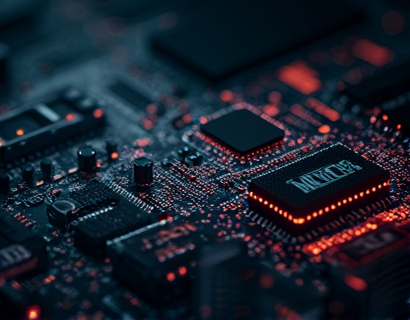Transforming Mathematics Education: The Power of Personalized AI-Driven Learning for Young Learners
The landscape of mathematics education for children and young learners aged 5 to 18 is undergoing a significant transformation, driven by advancements in artificial intelligence and a deeper understanding of how children learn. This revolution is not just about integrating technology into the classroom but about creating a personalized learning experience that adapts to each student's unique needs, abilities, and learning pace. The goal is to build a strong foundation in mathematics, foster a lifelong passion for STEM, and prepare the next generation of leaders in these critical fields.
Understanding the Need for Personalized Learning
Traditional mathematics education often follows a one-size-fits-all approach, which can leave many students struggling to keep up or feeling unchallenged. Personalized learning, powered by AI, addresses this by analyzing individual student data to tailor the learning experience. This approach recognizes that each child has a different learning style, pace, and set of strengths and weaknesses. By leveraging AI, educators can provide targeted support and resources that cater to these individual differences, ensuring that every student has the opportunity to succeed.
Interactive Problem-Solving: Engaging Young Minds
One of the cornerstone features of AI-driven math education is interactive problem-solving. Unlike static textbooks, AI platforms offer dynamic, interactive exercises that engage students in the learning process. These problems are designed to be challenging yet achievable, encouraging students to think critically and creatively. The AI system adjusts the difficulty level in real-time based on the student's performance, ensuring a balanced challenge that keeps students motivated and interested. This interactive approach not only enhances understanding but also builds confidence in solving complex mathematical problems.
Engaging Resources to Spark Curiosity
AI-driven math education platforms go beyond traditional textbooks by providing a rich array of engaging resources. These include videos, animations, games, and simulations that make abstract concepts more tangible and fun. For example, a lesson on fractions can be brought to life through interactive games where students manipulate fractions in a virtual environment. Such resources cater to different learning styles, helping to maintain student engagement and interest. Moreover, these multimedia elements can help demystify complex topics, making mathematics more accessible and enjoyable for young learners.
Adaptive Learning Paths: Tailoring Education to Individual Needs
A key advantage of AI-driven education is the ability to create adaptive learning paths. The AI system continuously monitors a student's progress, identifying areas of strength and weakness. Based on this data, the platform generates a personalized learning plan that focuses on the specific needs of the student. This adaptive approach ensures that no student is left behind or bored by material they have already mastered. For instance, a student who excels in algebra but struggles with geometry will receive more geometry-focused exercises and resources, while still being challenged in areas where they excel.
Building Confidence Through Positive Reinforcement
Confidence is a critical component of academic success, and AI-driven math education platforms are designed to foster this through positive reinforcement. The system provides immediate feedback on assignments and quizzes, celebrating correct answers and offering constructive guidance on mistakes. This instant feedback loop helps students understand their errors and learn from them without the frustration of waiting for a teacher's correction. Over time, this positive reinforcement builds a growth mindset, encouraging students to view challenges as opportunities for growth rather than insurmountable obstacles.
Enhancing Academic Performance
The personalized and adaptive nature of AI-driven math education directly contributes to improved academic performance. By addressing individual learning gaps and providing targeted support, students are better equipped to grasp complex concepts and apply them in various contexts. Studies have shown that students using personalized learning platforms demonstrate significant improvements in test scores and overall math proficiency. This enhanced performance not only boosts grades but also increases the likelihood of students pursuing further studies in STEM fields.
Fostering a Lifelong Passion for Mathematics and STEM
Beyond academic performance, AI-driven math education aims to cultivate a lifelong passion for mathematics and STEM. By making learning fun and relevant, these platforms inspire students to see the beauty and utility of mathematics in the world around them. Interactive projects and real-world applications showcase how math is integral to solving real problems, from designing sustainable cities to advancing medical research. This exposure helps students develop a deeper appreciation for the subject and motivates them to continue exploring and learning throughout their lives.
Supporting Teachers and Educators
AI-driven math education is not just about the students; it also provides valuable tools and insights for teachers and educators. The platform offers detailed analytics and reports that help educators track student progress, identify common misconceptions, and adjust their teaching strategies accordingly. This data-driven approach enables teachers to provide more targeted and effective instruction, further enhancing the learning experience. Additionally, AI can assist in grading and administrative tasks, freeing up more time for teachers to focus on what they do best: inspiring and guiding their students.
Addressing the Digital Divide
While the benefits of AI-driven math education are clear, it is essential to address the digital divide that can exclude some students from these advanced learning tools. Efforts are being made to ensure that personalized AI education is accessible to all, regardless of socioeconomic background. This includes providing devices and internet access to underprivileged schools and communities, as well as developing offline capabilities for the platforms. By bridging this gap, we can ensure that every student has the opportunity to benefit from this transformative educational approach.
The Future of Mathematics Education
As AI technology continues to evolve, the potential for personalized math education is vast. Future developments may include more sophisticated AI algorithms that can predict and prevent learning gaps before they occur, even more immersive virtual and augmented reality experiences, and seamless integration with other subjects to create a cohesive STEM curriculum. The ultimate goal is to create a learning environment where every student can thrive, equipped with the skills and passion to excel in the rapidly changing world of the 21st century.
In conclusion, personalized AI-driven math education represents a significant leap forward in how we teach and learn mathematics. By combining interactive problem-solving, engaging resources, and adaptive learning paths, these platforms are not only improving academic performance but also fostering a deep and lasting love for mathematics and STEM. As we continue to refine and expand these tools, we can look forward to a future where every child has the opportunity to become a confident, capable, and passionate mathematician.










































